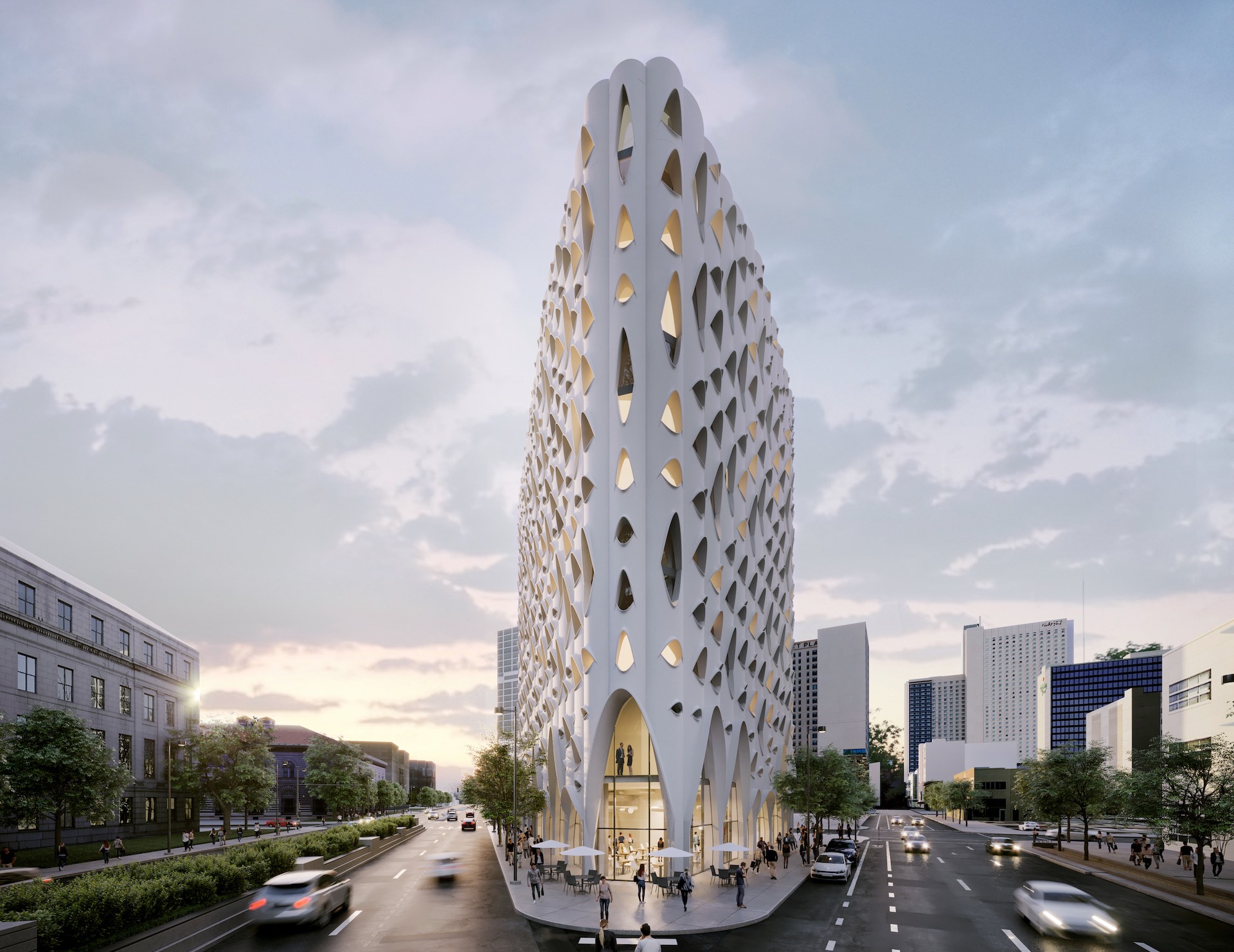Low-carbon mixes match hotel developer’s sustainability tone
Sources: Holcim US, Chicago; CP staff
An ECOPact concrete mix specification for the recently topped out Populus hotel in Denver nets a 764-ton reduction in carbon dioxide emissions when measured against CO2 metrics attending conventional ready mixed concrete. Denver producer Holcim US designs ECOPact concretes with supplementary binding agents to offset carbon-intensive portland cement. The substitution assures an Environmental Product Declaration-indicated global warming potential figure—expressed as kilograms of carbon dioxide emissions equivalent per cubic yard or meter (kg CO2e)—30 percent or lower than the regional average for conventional concrete mixes.
The concrete schedule for the 13-story, 265-room Populus hotel hovers 8,000 cubic yards, ECOPact mixes accounting for about 65 percent of the total. Holcim US teamed with Studio Gang, Chicago architect and urban design specialist, Denver developer Urban Villages, and general contractor Beck Group to incorporate the ECOPact spec in structural conditions.

The exterior of the cast-in-place concrete structure borrows shapes from Populus Tremuloides, Colorado’s native Aspen tree. The hotel is scheduled for early-2024 opening. Rendering: Studio Gang
“Our metric for success is not just the projects we build; it’s measured by how well we’re stewarding the real estate industry towards a greener future,” says Urban Villages Co-Founder and CEO Grant McCargo. “By showcasing how projects can use creative solutions like low-carbon concrete to reduce carbon emissions, we’re laying the groundwork for other developers to replicate and help leave our planet in a better place.”
“We’re transforming global sustainability standards for our industry. Projects like Populus, one of the first hotels of its kind in the United States, show how building materials are a vital part of the sustainability solution,” adds Holcim Region Head, North America Toufic Tabbara. “We’re driven to find ways to decarbonize buildings across their entire lifecycles to mitigate the impact of today’s growing population and rising urbanization.”